ARoS, Århus
/The Kunstmuseum in Århus, generally and better known as ARoS, opened in April 2004 in a new building designed by Schmidt Hammer Lassen, an architectural partnership from Århus that was founded in 1986 by Morten Schmidt, Bjarne Hammer and John Lassen.
The art gallery houses major collections of Danish Art from 1770 to 1900; Danish Modern Art from 1900 to 1960 and a collection of Contemporary Art and there is also an important programme of exhibitions.
The building is a giant, stark, dark brick red cube pierced by full-height glazed entrances on each side and under cut by a run of windows along the street frontage that light the book shop and cafe area.
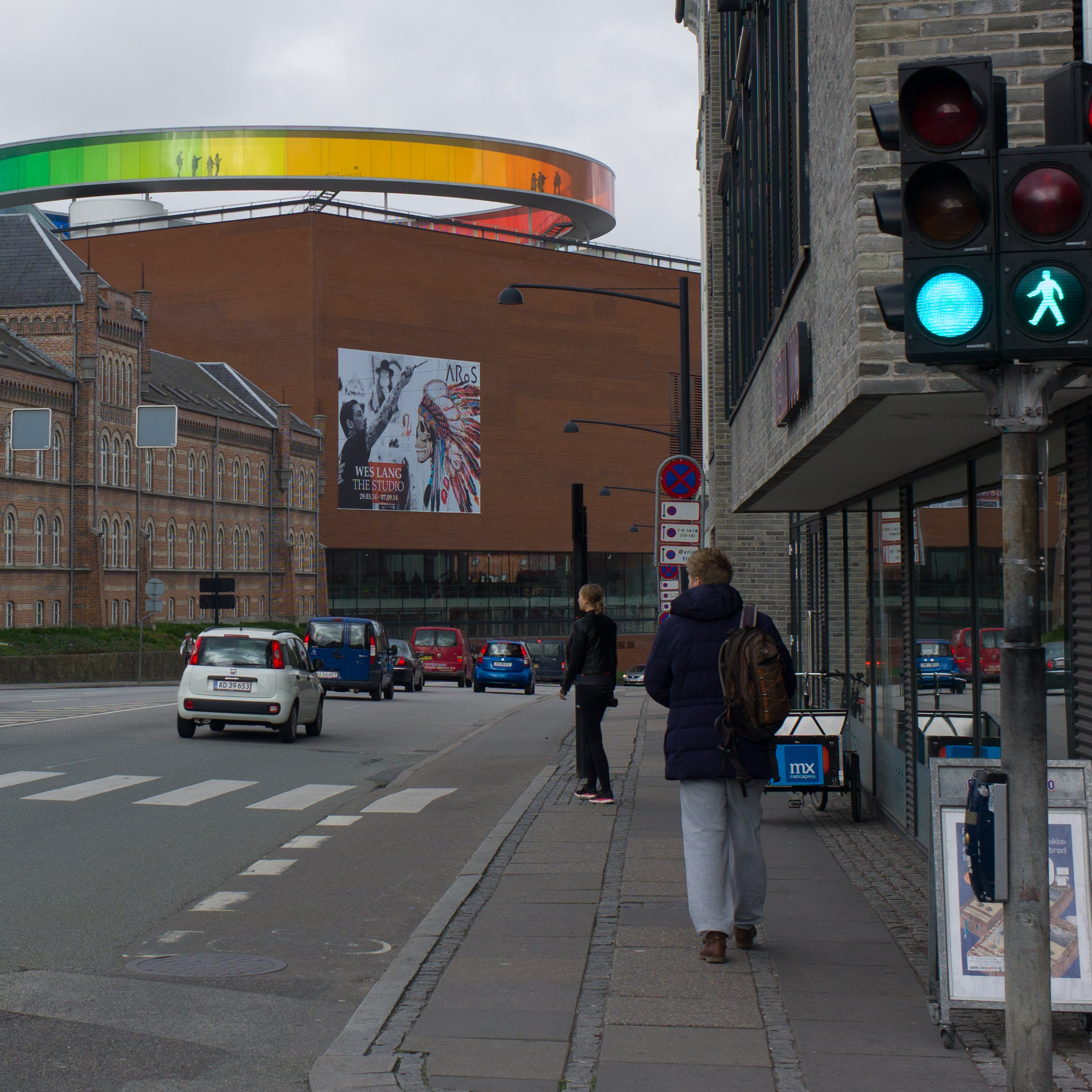
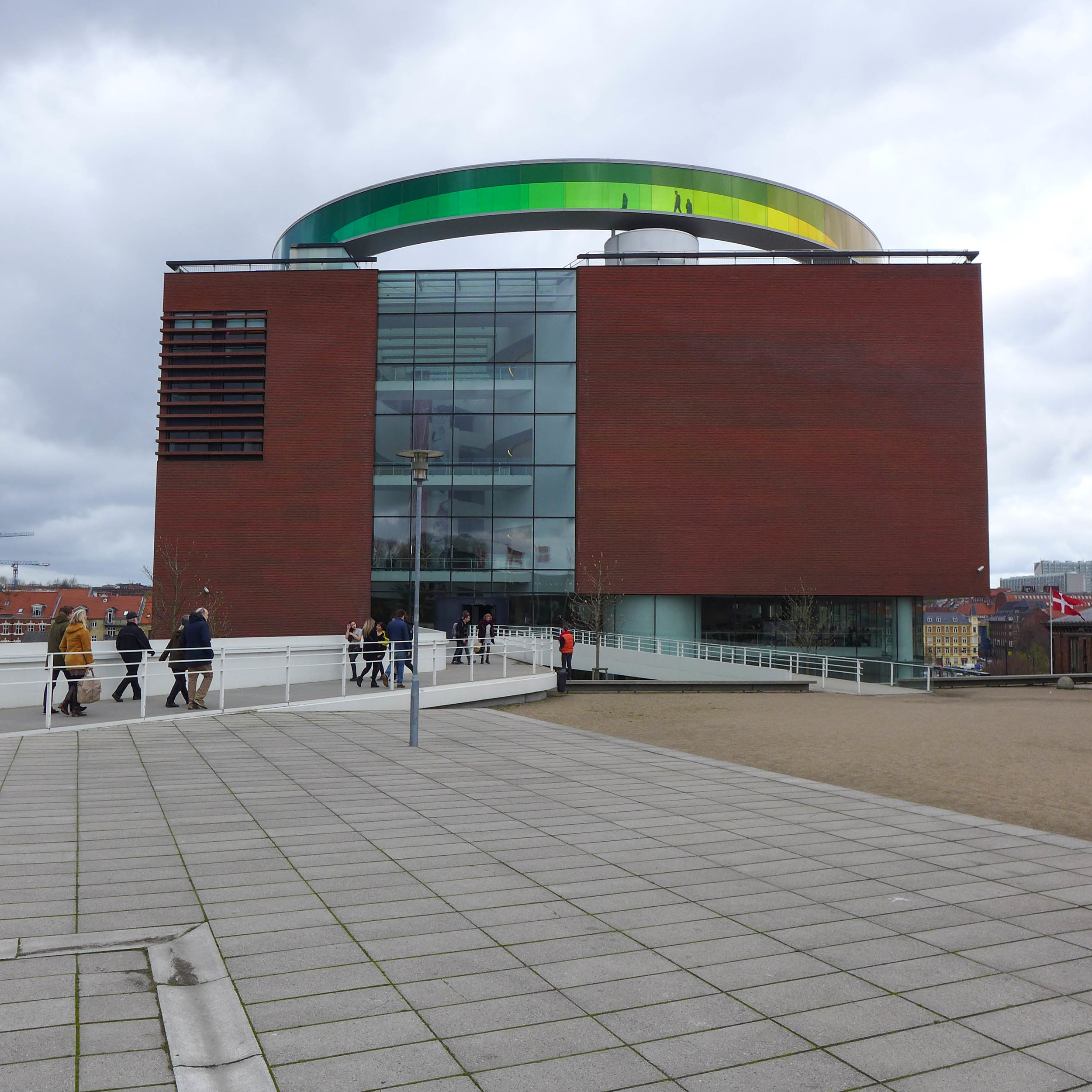
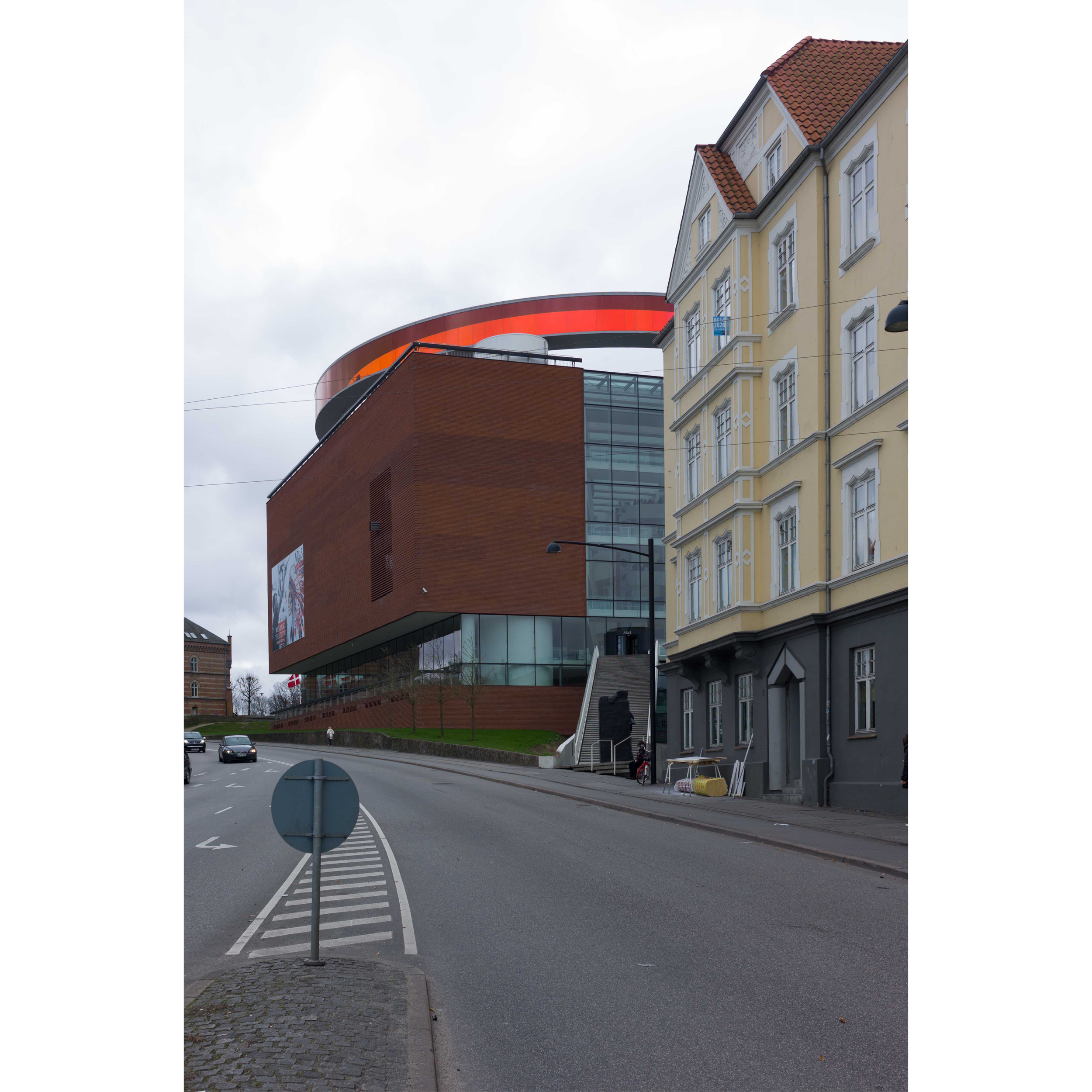
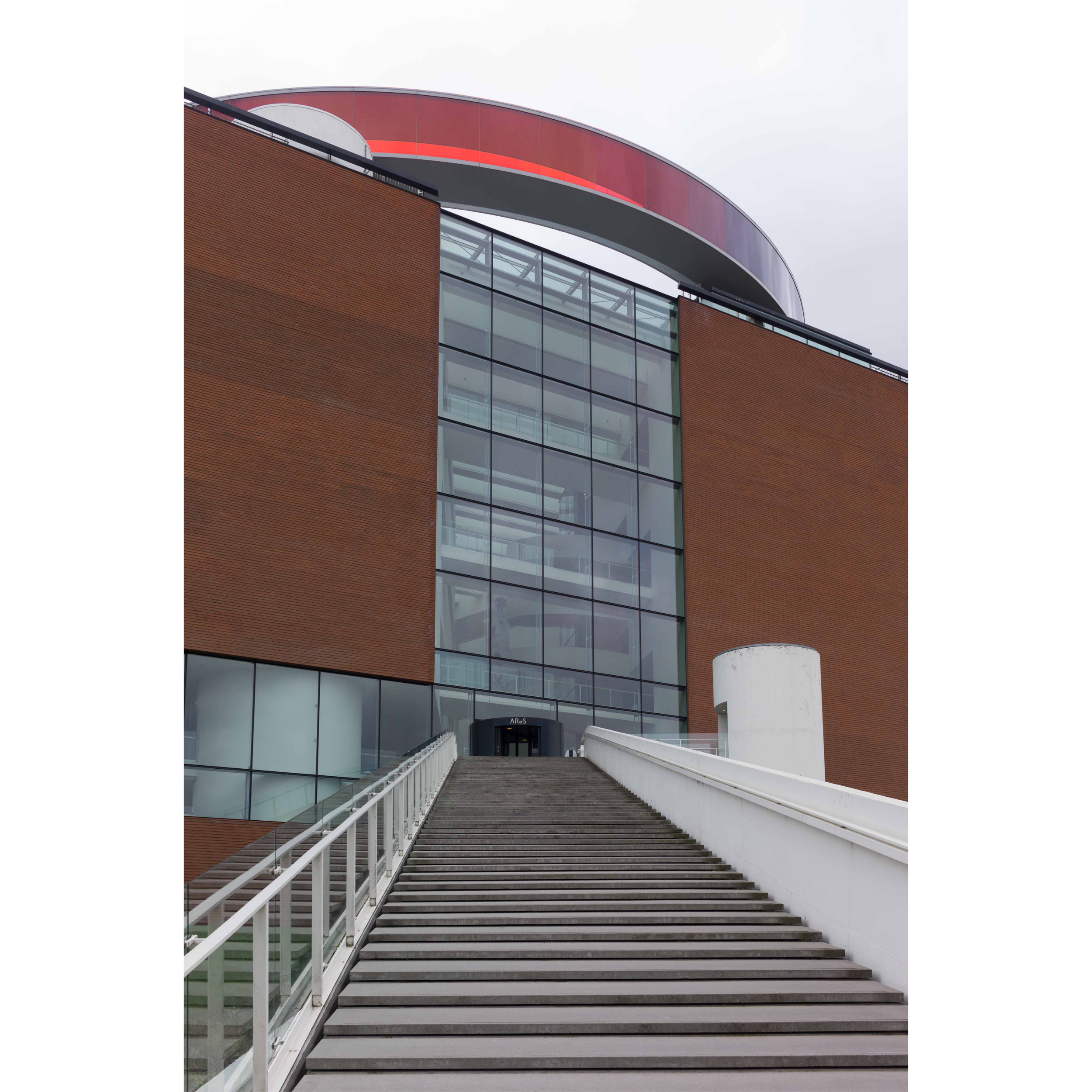

I’m not sure about the exterior - mainly because of its location hard against the arc of a main road, dropping down to a valley, across but below the north-east front. Close by are large municipal buildings but it is not obvious that there has ever been a master plan for the urban scape of these major public buildings or at least a plan that anyone has stuck to. The simple but massive block of the building almost defies the slope of the site almost challenging anyone who might suggest it could or might slide down towards the river. Seen from down the slope, a long run of shallow steps up to the secondary entrance almost looks like an afterthought but could, I suppose, be compared to the approach to a medieval castle keep.
The layout of this part of the city can really be explained by the very rapid expansion of Århus in the 19th and early 20th centuries … still clear in the surviving buildings in this south part of the city … and by the topography that together still determines the layout of the main roads of the city. The medieval and early-modern town was tightly laid out around the cathedral, with a large market square to its west and, close by, a municipal theatre and the old town hall and courthouse that are all on the north side of a narrow river valley.
It has been suggested that the population of Århus was about 3,500 people at the end of the 18th century rising to 5,000 people with the expansion of the port in 1810 growing to 15,000 by 1870, 50,000 by 1900 and 101,000 by 1930.
With the port and the sea immediately to the east of the medieval settlement, this rapid and commercially-driven expansion of the city in the 19th century was south across the river to a railway station - the present station building dating from 1927. A number of roads curve around forming a south-west quadrant running back down to the river and the old road that headed west out of the old city. Immediately before the second World War a new city hall was built in this south-west quarter of the city (to designs by Arne Jacobsen and Erik Møller) and inaugurated in June 1941. To the west of that new city hall is a very large open area and then a concert hall (opened in 1982) and the congress centre with the art gallery immediately to the north of this group but close to the backs of houses as if the plan may be to demolish or clear more in the future.
There seems to be no clear visual or clear physical link between the buildings which are set at angles to each other, in part because of the curve of the main road Vester Alle, and the gallery suffers as a consequence. The ways into the gallery on the north-west front, from downhill towards the houses, and the main entrance on the south-east side from the direction of city hall seem to ignore the road.
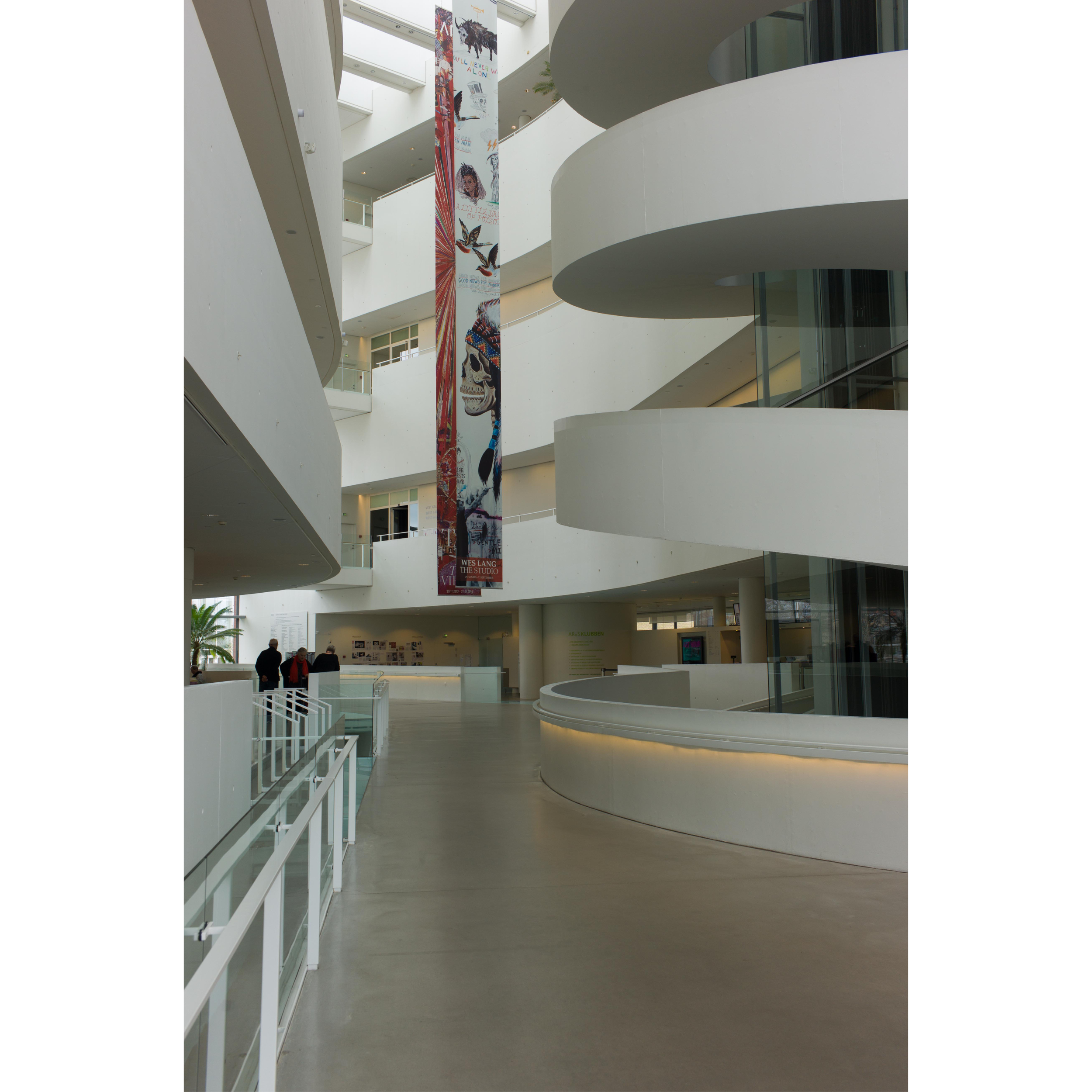
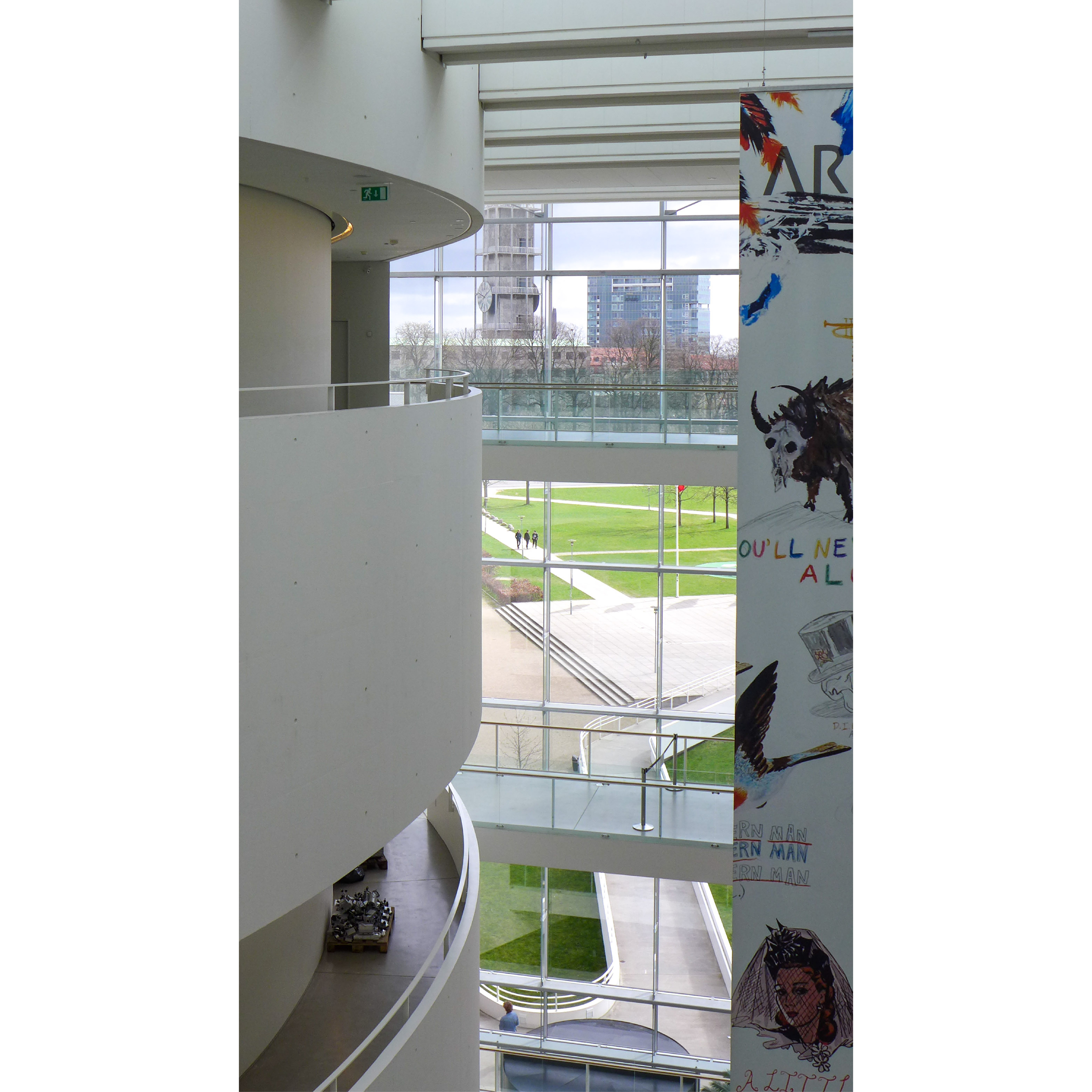

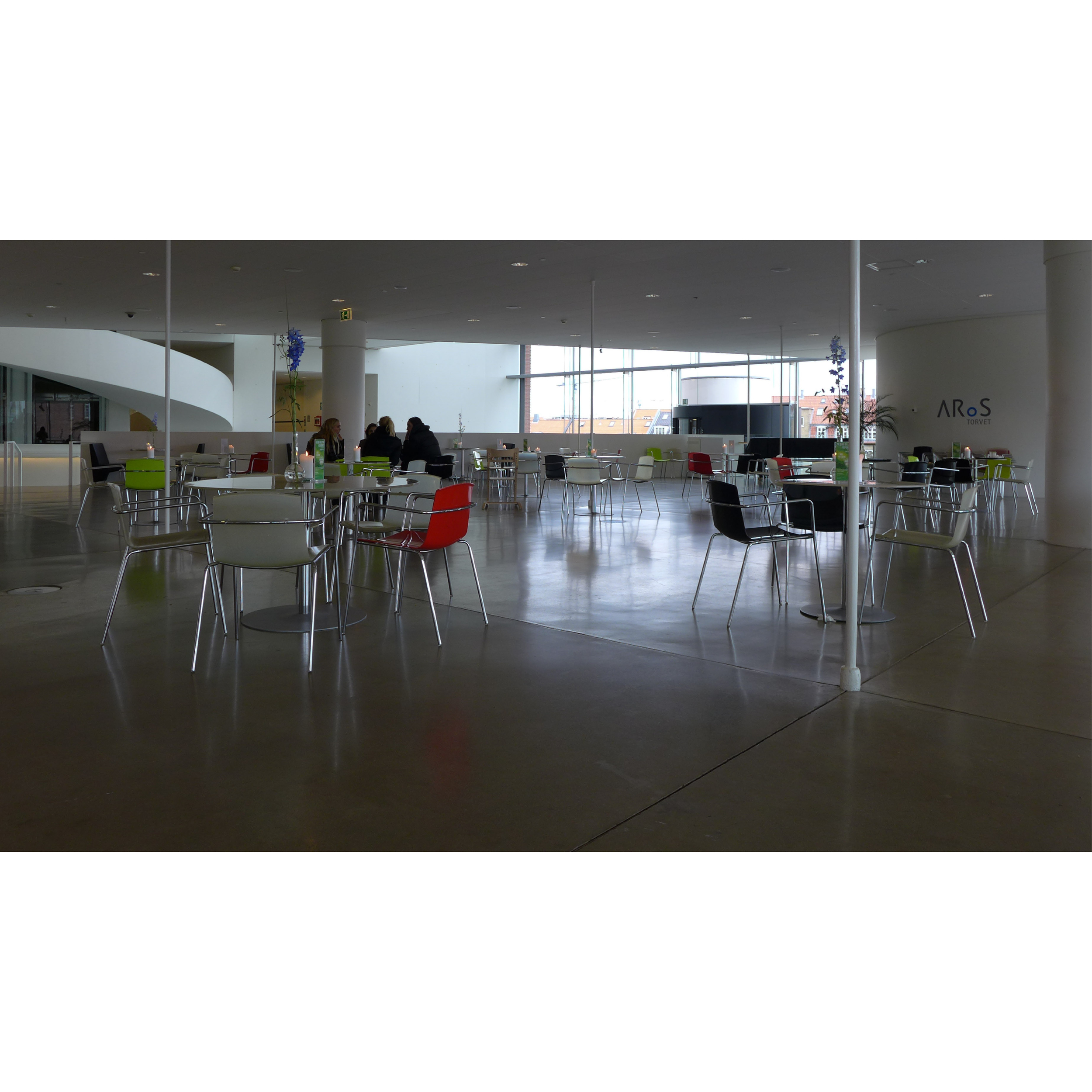

Once inside the building the story is very different and much more coherent and much more exciting. The two entrances, on opposite sides of the cube, are linked by a sinuous street rising the full height of the building with curved galleries looking down into it and cross walks silhouetted against the full-height panels of glass reminiscent of the harbour-side entrance into the Royal Library in Copenhagen … an earlier building by Schmidt, Hammer, Lassen that was completed in 1999.
Exhibition galleries and spaces for the collection, generally without natural light, are laid out on both sides of this extended, curved atrium with the levels linked by a circular staircase climbing up the building around the main public lifts. Ticket desks, cloakrooms, the book shop and cafe are all on the entrance level and are given plenty of space and seem to absorb people quickly and efficiently which seems to be important given just how popular the gallery clearly is.
A major attraction, the Skywalk or Rainbow Panorama, was added across the roof of the building and opened in May 2011.
The designer, Olafur Eliasson, was born in Copenhagen in 1967 but now has his studio in Berlin - the Institut für Raumexperience (Institute for Spatial Experiments).
The Skywalk forms a corridor 150 metres long and 3 metres wide that levitates above the roof of the building and describes a circuit with a diameter of 52 metres.
This huge but very elegant structure seems to float above the brick cube … the main elements of the ring are apparently the thin floor and thin flat strip of ceiling or roof that appear to be strung between huge sheets of coloured glass … the colours of the glass running through the spectrum of the rainbow.
When I visited the art gallery last month it was extremely busy with parties of school students. They were incredibly attentive and appreciative … I was slightly taken aback by how polite they were with occasional rounds of applause as they listened in groups to guides or teachers … but I assumed that a lot of pent-up energy was going to be released by the time they got up to the Skywalk.
Methodically I worked my way up through all the galleries and exhibitions, leaving the Skywalk to the end of my visit, and was expecting a lot of noise and running about as I climbed up to the walk. In fact it was just the opposite. It was curiously calm as kids and students and families strolled around the circuit looking out over the city talking about the changes in colour as they looked across the ring or just chatting quietly. This was clearly the Danish version of passegiata. And very civilised at that.































